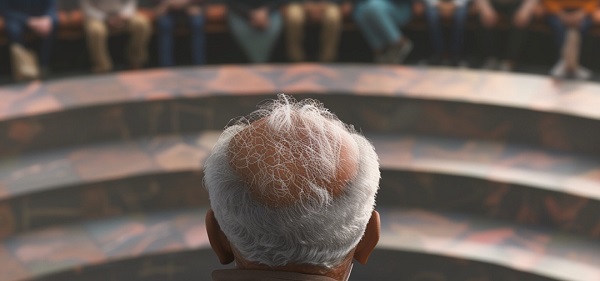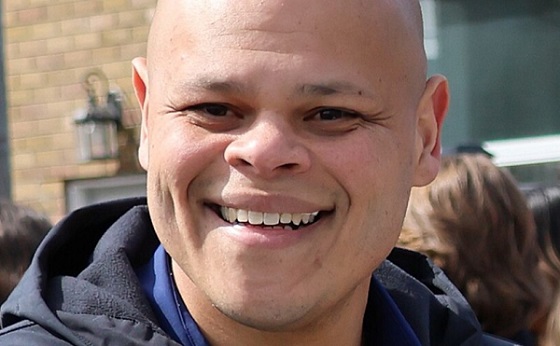National
Liberal House Leader tells gov’t-funded media they must ‘scrutinize’ Conservatives

From LifeSiteNews
Liberal House leader Karina Gould told government-funded reporters to ‘scrutinize’ Conservative Party leader Pierre Poilievre, who has repeatedly condemned government-funded media as being an arm of the Liberals.
The Liberal House Leader told government- funded media that it is their job to the scrutinize the Conservative Party.
In a September 16 news conference, Government House leader Karina Gould directed mainstream media reporters to “scrutinize” Conservative Party leader Pierre Poilievre, who has repeatedly condemned government-funded media as being an arm of the Liberals.
“Make sure we are holding (Pierre Poilievre) to account, to ensure he faces the proper scrutiny, because as Canadians get closer and closer to an election he has to answer those tough questions,” Gould instructed.
“Instead of answering legitimate questions from journalists – that’s his job – what does he do to journalists?” she questioned. “He attacks them. This is not something done by a responsible leader,” she asserted.
Gould’s comments were in reference to Poilievre’s promise to defund the Canadian Broadcasting Corporation (CBC) if elected prime minister. Poilievre is a long-time critic of government-funded media, especially the CBC.
Gould claimed that Poilievre’s suggestion would deny Canadians access to important information, ignoring the fact that Prime Minister Justin Trudeau’s new legislation blocked all access to news content on Facebook and Instagram.
“When it comes to making sure that Canadians have access to good quality information in a time of incredible disinformation, what does he propose to do?” Gould questioned.
“Defund the CBC. And all of you as journalists have experienced firsthand how he treats people who try to ask him tough questions, who try to have him face the scrutiny of what he puts forward,” she continued.
“How does he react?” asked Gould. “As a bully, as someone who will not stand to scrutiny, who will not respond respectfully, not just to you as journalists but on the questions you’re asking on behalf of Canadians because your job is to get that information to Canadians. There is a reason why he doesn’t want Canadians to know what his true agenda is.”
Gould did not provide any examples of Poilievre refusing to answer or being disrespectful to reporters.
While the reporters did not respond to her demands in the moment, mainstream media in Canada relies on government subsidies to stay afloat, and is often criticized for its left-wing bias. In fact, there have been multiple instances of the CBC pushing what appears to be ideological content, including the creating of pro-LGBT material for kids, tacitly endorsing the gender mutilation of children, promoting euthanasia, and even seeming to justify the burning of mostly Catholic churches throughout the country.
Despite this, beginning in 2019, Parliament changed the Income Tax Act to give yearly rebates of 25 percent for each news employee in cabinet-approved media outlets earning up to $55,000 a year, to a maximum of $13,750.
The Canadian Heritage Department since admitted that the payouts are not even sufficient to keep legacy media outlets running, and recommended that the rebates be doubled to a maximum of $29,750 annually.
Last November, Trudeau again announced increased payouts for legacy media outlets, payouts which coincide with the lead-up to the 2025 election. The subsidies are expected to cost taxpayers $129 million over the next five years.
Similarly, Trudeau’s 2024 budget outlined $42 million in increased funding for the CBC for 2024-25.
The $42 million to the CBC is in addition to massive media payouts which already make up roughly 70 percent of its operating budget, and total more than $1 billion annually.
Digital ID
Canada considers creating national ID system using digital passports for domestic use

Fr0m LifeSiteNews
The Department of Immigration has had research done to investigate digital passports as an identity document, but MPs have soundly rejected the idea as dangerous and costly.
Without oversight from elected federal MPs, Canada’s Department of Immigration had research done to investigate a national ID system using digital passports for domestic use and how such a system would be enforced.
According to Access to Information documents, a senior analyst wrote in a staff email, “One of the things that came up in our discussions with Canadian Digital Services is the assumption the passport would be used within Canada as an identity document.”
“This warrants a policy discussion,” the staff email added.
MPs have soundly rejected any national ID system as both dangerous and costly.
According to internal records, managers at the immigration department put a new question regarding national ID into a 2024 voluntary Passport Client Experience Survey.
The files do not say who requested the new question to be added, and no MPs, Senators, or even Canada’s own Privacy Commissioner were told about this question.
Liberal MP Marc Miller, who is now Prime Minister Mark Carney’s Minister of Canadian Identity and Culture but was then the Immigration Minister, offered no comment to the media when asked early this year about why the new question was inserted in the passport survey.
The question was asked, “How comfortable would you be sharing a secure digital version of the passport within Canada as an identity document?”
Responses were given as “very comfortable,” “comfortable,” “neutral,” “not comfortable,” or “not comfortable at all.”
The results of the questionnaire in general showed that only a fifth of Canadians would consider their passport to serve as a form of ID, with about the same amount rejecting the idea of using one’s passport for domestic ID purposes.
One of Canada’s most staunchly pro-life MPs, Leslyn Lewis, recently warned Canadians to be “on guard” against a push by the ruling Liberal Party to bring forth Digital IDs, saying they should be voluntary.
As reported by LifeSiteNews, the Canadian government hired outside consultants tasked with looking into whether or not officials should proceed with creating a digital ID system for all citizens and residents.
Per a May 20 Digital Credentials Issue memo, and as noted by Blacklock’s Reporter, the “adoption” of such a digital ID system may be difficult.
Canada’s Privy Council research from 2023 noted that there is strong public resistance to the use of digital IDs to access government services.
As reported by LifeSiteNews, the Carney federal government plans to move ahead with digital identification for anyone seeking federal benefits, including seniors on Old Age Security.
Conservative leader Pierre Poilievre sounded the alarm by promising to introduce a bill that would “expressly prohibit” digital IDs in Canada.
Digital IDs and similar systems have long been pushed by globalist groups like the World Economic Forum, an organization with which Carney has extensive ties, under the guise of ease of access and security.
National
Canada’s free speech record is cracking under pressure

This article supplied by Troy Media.
Is a protest double standard eroding Canada’s values?
Free speech in Canada shouldn’t depend on which side of the Israel–Palestine conflict you support, but that’s what seems to be happening.
Canada’s continued success depends on political stability, shared standards and the freedom to speak up when something is wrong. But that only works when institutions apply their rules fairly. Recent cases raise concerns that this isn’t happening consistently, and the debate around the Israel–Palestine conflict shows how quickly that can slip.
After the Hamas terrorist attack on Israel on Oct. 7, which killed more than 1,200 people and led to more than 200 hostages being taken, Canadians expressed deep sympathy for Israeli civilians. Statistics Canada reported a 71 per cent increase in hate crimes against Jewish people in 2023, rising to 900 incidents. Police increased security around synagogues and community centres in response.
As the conflict escalated, Muslim, Arab and Palestinian organizations publicly described rising fear and anger in their communities. Police-reported hate crimes targeting Muslim people rose by 94 per cent to 211 incidents in the same period. Both communities faced real threats. What stood out was that institutions responded inconsistently to people who spoke out as tensions rose.
Civil liberties groups, including the Canadian Civil Liberties Association, warned that responses to pro-Palestinian demonstrations were sometimes uneven or heavy-handed. The size and aggressiveness of Palestinian protests may explain some of this, but questions about fairness remain.
The inconsistency becomes more apparent on campuses. In 2019, Jewish and pro-Israel students at York University said they felt unsafe when a protest by pro-Palestinian activists disrupted an event featuring members of an Israeli reservist group. Chants drowned out the speakers and clashes broke out. Toronto police were called, but many criticized the university for not doing enough to protect the Jewish and pro-Israel students who attended.
A recent case in Montreal shows the imbalance from another angle. An Indigenous high school student was suspended after posting criticism of Israel on Instagram. She told CBC she was commenting on government actions, not targeting any group. The school said the post violated its code of conduct, but the suspension, which drew national attention, raised concerns about whether schools apply the same standard to students who speak out on this issue.
When institutions treat people differently depending on their viewpoint, public trust suffers. Canadians who are Israeli, Palestinian, Arab, Jewish, Christian and Muslim all deserve to be treated fairly.
Canadian courts have been clear that political speech, including criticism of foreign governments, is protected under Section 2(b) of the Charter of Rights and Freedoms. Freedom of expression covers peaceful protest, speech and the press unless it crosses into hate. That protection applies to people who support Palestinians and to those who support Israel. The law does not take sides, and institutions shouldn’t either.
Canada also has obligations under international law, including the Geneva Conventions and the Rome Statute of the International Criminal Court. These agreements require Canada to uphold basic standards of fairness and humanity. When governments or institutions fall short, Canadians have a responsibility to speak up.
That expectation applies in schools as well. As an educator, I am expected to encourage informed discussion on difficult issues, including the Israel–Palestine conflict. Students need to rely on credible information, think clearly about ethical and legal questions and respect people who disagree with them. That only works when they know the rules apply equally.
Uneven decisions send the opposite message. When institutions respond differently to similar behaviour, they weaken the sense that the system is fair. That is how trust erodes.
Free societies do not promise agreement. They promise that everyone can speak, be heard and be treated the same under the law. The cases discussed here involving speech about the Israel–Palestine conflict suggest that Canada is not meeting that standard as consistently as it should. Addressing those inconsistencies is essential to maintaining trust in the institutions meant to protect our rights.
Gerry Chidiac specializes in languages and genocide studies and works with at-risk students. He received an award from the Vancouver Holocaust Education Centre for excellence in teaching about the Holocaust.
Troy Media empowers Canadian community news outlets by providing independent, insightful analysis and commentary. Our mission is to support local media in helping Canadians stay informed and engaged by delivering reliable content that strengthens community connections and deepens understanding across the country.
-

 C2C Journal1 day ago
C2C Journal1 day agoWisdom of Our Elders: The Contempt for Memory in Canadian Indigenous Policy
-

 Sports1 day ago
Sports1 day agoEgypt, Iran ‘completely reject’ World Cup ‘Pride Match’ plan
-

 Alberta1 day ago
Alberta1 day agoAlberta introducing three “all-season resort areas” to provide more summer activities in Alberta’s mountain parks
-

 Censorship Industrial Complex2 days ago
Censorship Industrial Complex2 days agoLiberals gain support for ‘hate speech’ bill targeting Bible passages against homosexuality
-

 Business2 days ago
Business2 days agoStorm clouds of uncertainty as BC courts deal another blow to industry and investment
-

 Great Reset2 days ago
Great Reset2 days agoProposed ban on euthanasia for mental illness sparks passionate debate in Canada’s Parliament
-

 Automotive1 day ago
Automotive1 day agoThe $50 Billion Question: EVs Never Delivered What Ottawa Promised
-

 Business10 hours ago
Business10 hours agoTaxpayers Federation calls on politicians to reject funding for new Ottawa Senators arena




